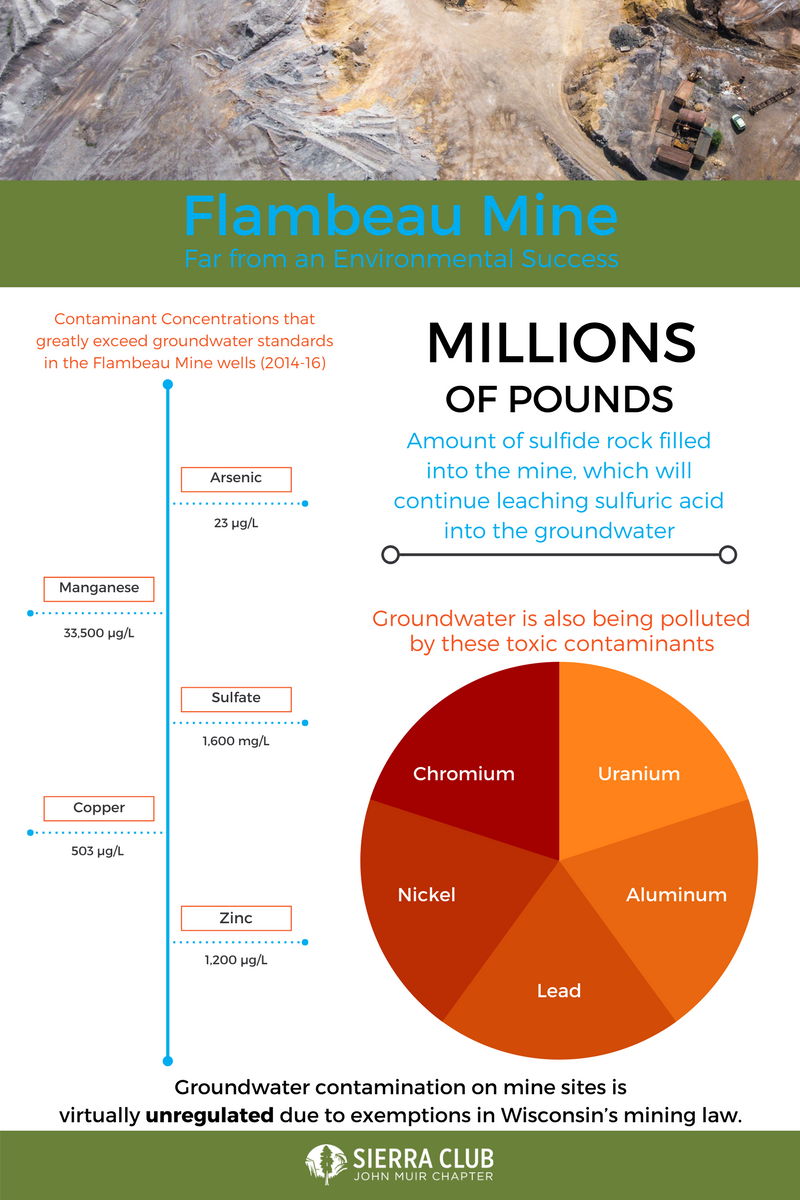By Marty Dillenburg, Chapter Water Intern
While it is now closed, the Flambeau Mine is far from inactive. This open-pit mine continually leaches toxic metals and other dangerous chemicals into the groundwater and Flambeau River, which is a mere 140 feet away. The copper and gold mine operated from 1993 to 1997, and while it has already been polluting for two decades, the situation may get worse.
A report published by geochemist and hydrogeologist Robert Moran, Ph.D. in the April of 2017 reveals that even today, concentrations of copper, iron, manganese, zinc, sulfate and arsenic that significantly exceed baseline levels and water quality standards. Groundwaters are also being contaminated by lead, chromium, nickel, uranium, and aluminum as well. A nearby creek has been listed as impaired by the WI DNR and US EPA due to the mine, and the Flambeau River is receiving chemicals from the mine as well. While limestone was added to the waste rock used to backfill the mine after closure to minimize acidification and mobilization of heavy metals and toxic chemicals, this neutralization reaction will eventually subside and pit waters are likely to become increasingly acidic and concentrations of toxic contaminants will likely increase.
Even scarier, Senator Tom Tiffany is attempting to use the Flambeau Mine as an example in an attempt to repeal Wisconsin’s Prove-it-First Law, citing it as “safely operating and closing without pollution to the environment.” This could not be further from the truth, as the Flambeau Mine highlights a highly inadequate permitting and oversight process by the WI DNR that has left our environment and citizens exposed to dangerous toxic chemicals.
Wisconsinites must urge state lawmakers to protect them from companies with only profits instead of environmental and human health in mind. With a repeal of the Prove-it-First Law, companies like Aquila Resources, who are behind Michigan’s Back Forty mine proposal which threatens the Menominee River, would enjoy streamlined permitting procedures, less opposition from local governments, and greater freedom to replace or contaminate wetlands.
